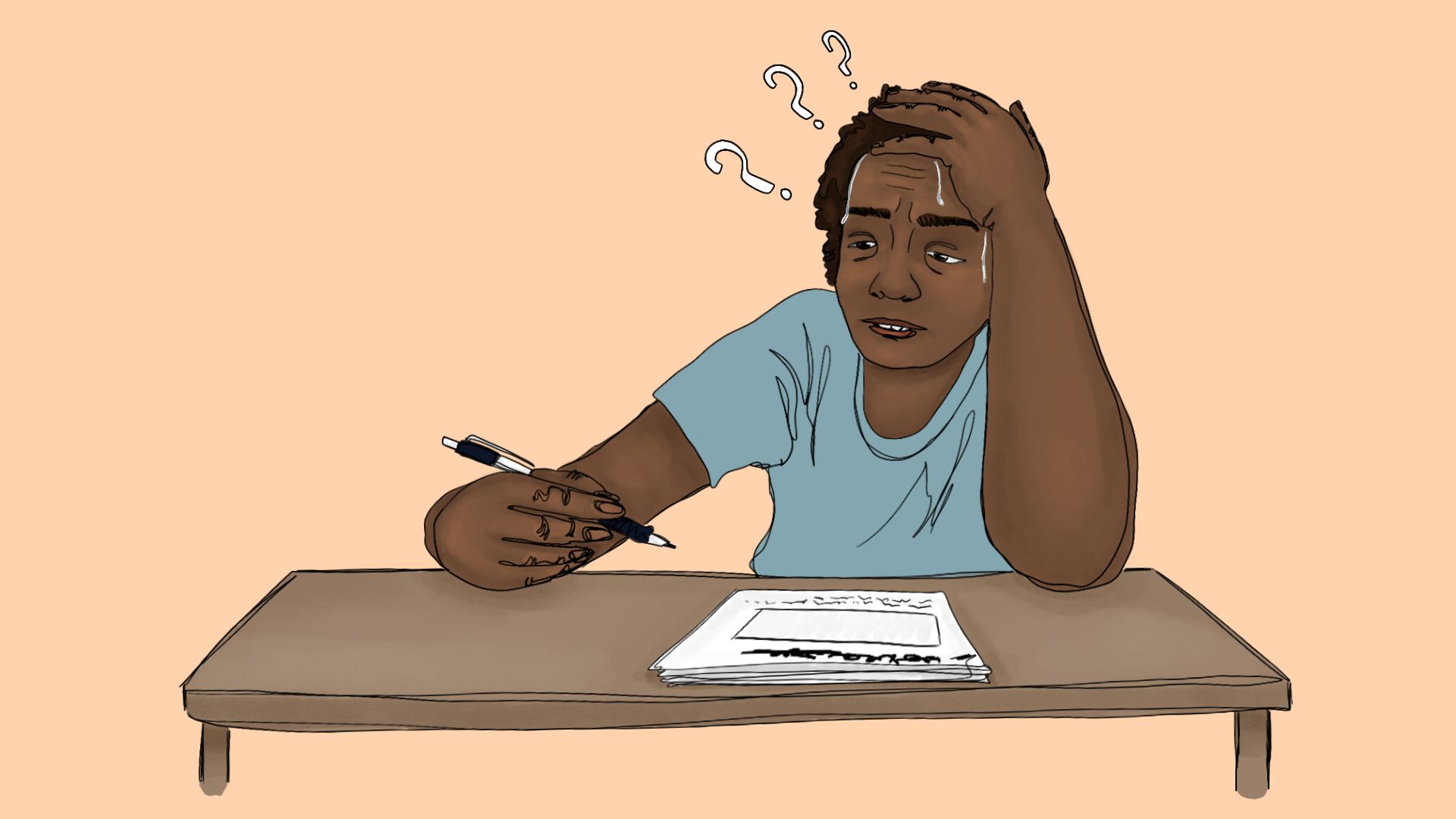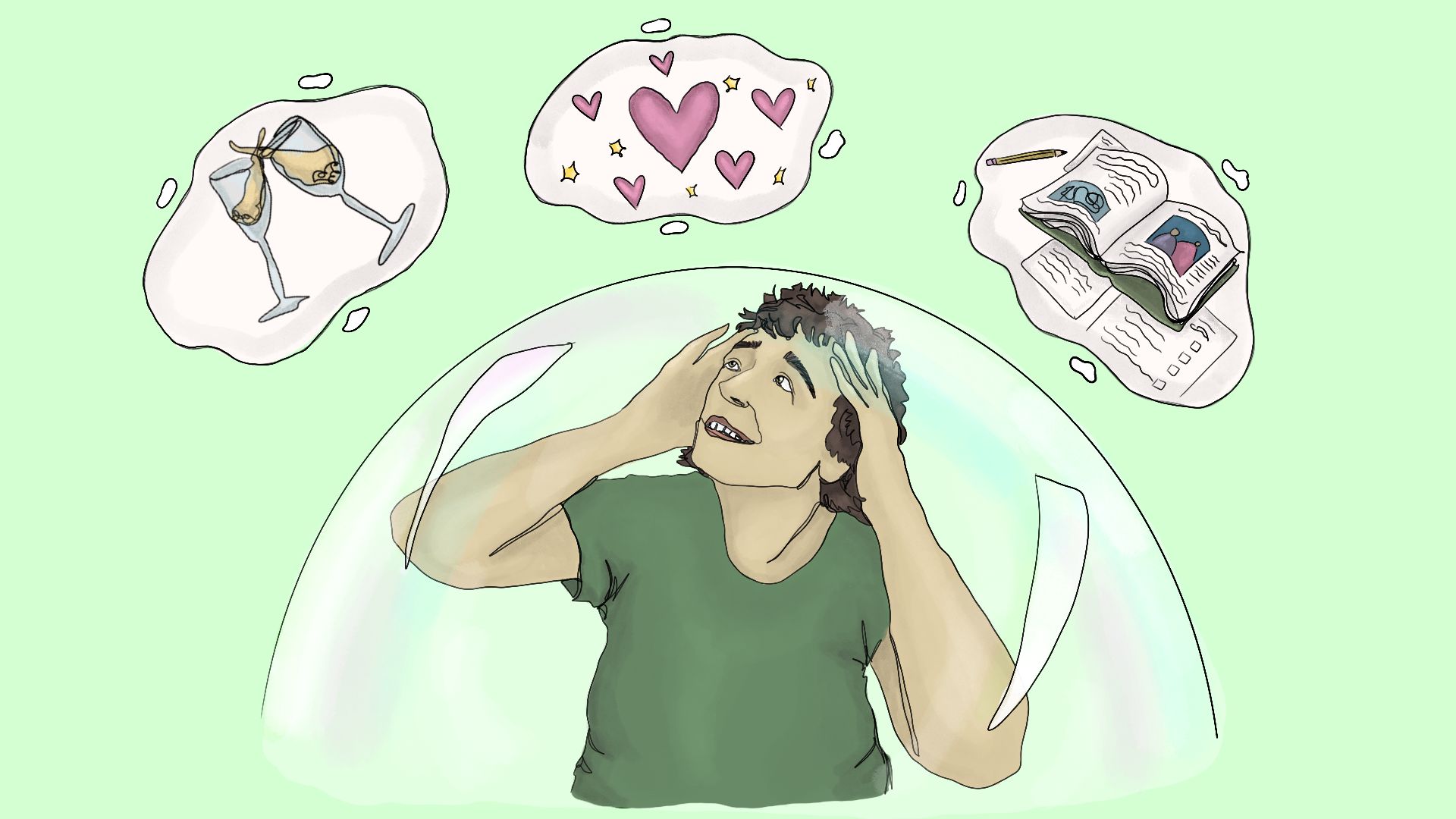What is worry?
Worry often involves a fear of what may happen in the future, and when you worry, you often think about the worst that can happen to you or someone you care about. Worry can often start with a triggering thought - what if - and then it's like a snowball rolling and getting bigger and bigger, gathering new worries along the way. When worries grow, it's common to become fearful and anxious.
Thousands of thoughts
We have 3000 to 4000 thoughts running through our heads every day. We think about a variety of things, from what we'll do on the weekend, studies, and perhaps love interests. Most of the thoughts come and go without us doing anything particular about them. We might dwell on some thoughts for a while before moving on to think about something else.
When worries grow, it is common to become fearful and anxious.
Psychologist
Trigger Thoughts
Unpleasant worry often starts with a trigger thought - something we are afraid might happen. "What if I get sick before the exam?" "What if my partner falls for someone else?" Often, a trigger thought is also linked to an emotion, usually anxiety/fear, but it can also be shame or frustration.
An emotional reaction reinforces the belief that the worry is real and makes you pay even more attention to the worries. That's when the snowball starts rolling, and you find it difficult to set aside the worries.
Identify your trigger thoughts
To help yourself gain better control over worry, you should look for the thoughts that typically generate worry for you. It can be helpful to write them down. Once you have identified them, it becomes easier to recognize them.

The white bear problem
Ideally, you would probably want to avoid unpleasant thoughts, but unfortunately, it is not possible for us humans to prevent thoughts from arising. The brain works in such a way that when we try to fight against a thought, it becomes even more disturbing and intrusive. This is known as ironic processing and is often illustrated through "The white bear problem".
Choose a time to worry
Because it is impossible to completely remove thoughts, we should practice postponing them instead. When you have recognized a trigger thought, instead of engaging with it, try telling yourself, 'This is a trigger thought, and I can think about it later.'
Many find it helpful to have a specific time of the day dedicated to worrying, for example, from four o'clock to ten past four. If you encounter a trigger thought that invites worry, you can say to yourself, 'I don't need to entertain this thought now; I can think about it during my worry time.'
When your designated worry time arrives, and you don't have any immediate worries, you don't need to bring up old worries. Simply continue with what you were doing initially. If you have active concerns, you can worry for ten minutes, and during this time, you may also consider whether these worries are purely concerns or if there is something actionable you can do.
When the worry time is over, resume your usual activities by postponing relevant trigger thoughts until the worry time the next day. In other words, you choose when you want to think about your worries and when it is not suitable. Ten minutes of worry time once a day is usually sufficient. It is not recommended to have worry time late in the evening but rather in the midday or early evening.
To experience better control over worry, it often requires practice, much like other things.
Psychologist
Practice redirecting your attention to something else
What happens if you're deeply immersed in worry and a friend drops by? Most people experience that they leave their worries behind to talk to their friend. What does it say about your control over worry when you can shift your attention from worry to talking with a friend?
Perhaps you can create a list of activities or thoughts to redirect your attention to when a trigger thought arises that you intend to postpone. Can you listen to a podcast? Play a song you like? Look at pictures of something pleasant? Take a walk?
Practice makes it easier
To experience better control over worry, it often requires practice, just like with other things. Some days are tougher than others, and those are typically the days when you might be a bit more vulnerable. On such days, it requires more patience with your ability to postpone trigger thoughts and practice staying motivated to continue with the planned activity, whether it's studying or hanging out with friends.
Over time, you will find that you can treat trigger thoughts the same way as other thoughts and realize that you have control over what you choose to think about. The goal is not to eliminate trigger thoughts but to tolerate their emergence and still choose not to engage with those thoughts right now.
